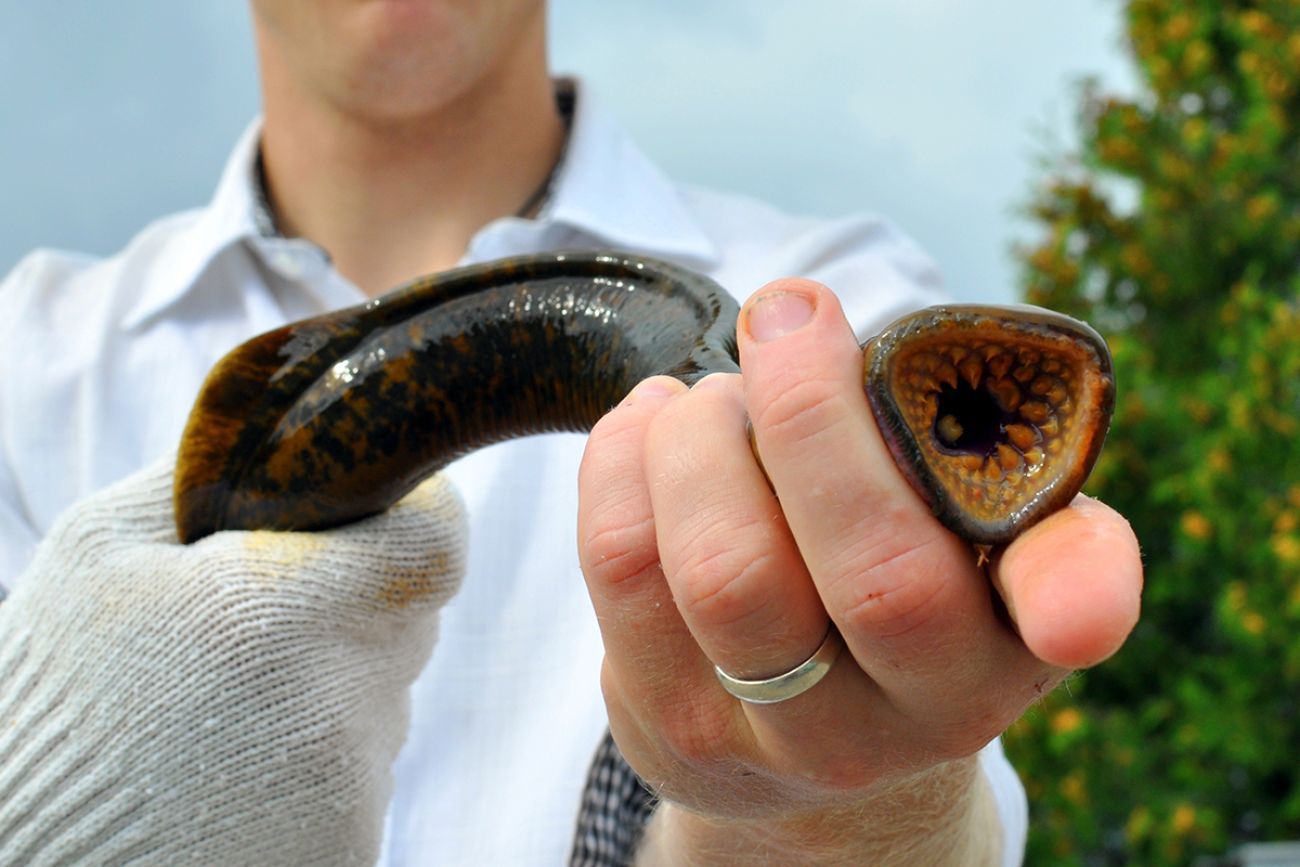Trump reverses cuts to Great Lakes lamprey program, but uncertainty remains

- The Trump administration has reversed a spate of firings and a hiring freeze that threatened to derail lamprey control efforts in the Great Lakes
- Officials overseeing the lamprey program are now scrambling to hire staff more than a month behind schedule
- They’re ‘cautiously optimistic,’ while acknowledging that the program may need to be less ambitious this year
Efforts to quell the Great Lakes sea lamprey invasion will continue this year — albeit more than a month behind schedule — after the Trump administration reversed a spate of firings that had imperiled the program.
The news came as a relief to Great Lakes fish advocates, who say annually dosing the region’s rivers with lamprey-killing chemicals is the only way to keep the eel-like invasive fish from eradicating beloved Great Lakes species such as whitefish, walleye and trout.
Now, “our teams are putting on their running shoes and running as hard as they can to get what must be done, done,” said Greg McClinchey, legislative affairs and policy director for the Great Lakes Fishery Commission, the binational body that oversees lamprey control efforts on both the US and Canadian sides of the lakes.
The lamprey control program relies on a small army of US Fish and Wildlife Services employees trained to fan out across hundreds of rivers each year, dosing them with a chemical called TFM that kills lamprey while sparing other species.
The program has broad bipartisan support from Great Lakes lawmakers.
Related:
- Trump firings hit Great Lakes sea lamprey program, Michigan forestry workers
- DOGE lays out $394M in Michigan health cuts. But what does it mean?
- Michigan universities would lose millions if Trump caps research costs
- Michigan’s EV transition in limbo as Trump halts climate spending
But soon after President Donald Trump took office, it was caught in the crosshairs of his quest to deploy Elon Musk’s Department of Government Efficiency to “significantly reduce the size of government.”
About 14 US Fish & Wildlife Service employees who implement the lamprey control program were fired in a Valentine’s Day weekend purge that also affected thousands nationally. The agency was also forbidden from hiring dozens of seasonal workers for the lamprey program, prompting officials who oversee it to question whether control efforts could take place at all this year.
The Trump administration gave no public explanation for its change of heart, but it came after a federal judge ordered the administration to re-hire thousands of federal workers, ruling that the mass firings were illegal. The administration, which contends that a glut of federal workers is ballooning the national debt, is appealing to the US Supreme Court.
Michigan Attorney General Dana Nessel hailed the reversal in a post on Instagram. "We spoke up and fought back. Now critical programs are being reinstated," Nessel wrote. "When we hold folks accountable, we get results."
Weeks behind and short on staff
But while hiring and training of lamprey control workers can now proceed, it may be too late to avoid negative consequences for a time-sensitive program that is now more than a month behind schedule.
Usually, crews begin treating rivers in April. This year, the program is just now beginning to recruit fired staff back to their jobs. Some may have already moved on to other opportunities.
“Not only are we trying to figure out how to best overcome the loss of five or six weeks of programming preparation, but we also have to determine how many of those people will come back,” said McClinchey. “So we’re cautiously optimistic, but where we are right now is kind of assessing where we’re at, assessing what staff resources will actually be available, and then what the program will look like going forward.”
The lampricide program costs US taxpayers more than $20 million annually. The investment protects a multibillion-dollar fishery that would collapse if lamprey were allowed to proliferate.
A single lamprey can consume 40 pounds of fish annually by attaching to the animals’ skin with razor-sharp teeth, and gradually draining their fluids.
The invaders nearly wiped out the Great Lakes ecosystem in the mid-1900s, before scientists discovered TFM. Annual applications of the compound have driven lamprey populations down to a tenth of their former size.
But the eel-like fish are prolific breeders, and officials estimate that foregoing a year of treatments would have allowed 4.5 million female lamprey to survive and spawn, laying a collective 450 billion eggs.
Michigan Environment Watch
Michigan Environment Watch examines how public policy, industry, and other factors interact with the state’s trove of natural resources.
- See full coverage
- Subscribe
- Share tips and questions with Bridge environment reporter Kelly House
Michigan Environment Watch is made possible by generous financial support from:
Our generous Environment Watch underwriters encourage Bridge Michigan readers to also support civic journalism by becoming Bridge members. Please consider joining today.
See what new members are saying about why they donated to Bridge Michigan:
- “In order for this information to be accurate and unbiased it must be underwritten by its readers, not by special interests.” - Larry S.
- “Not many other media sources report on the topics Bridge does.” - Susan B.
- “Your journalism is outstanding and rare these days.” - Mark S.
If you want to ensure the future of nonpartisan, nonprofit Michigan journalism, please become a member today. You, too, will be asked why you donated and maybe we'll feature your quote next time!






